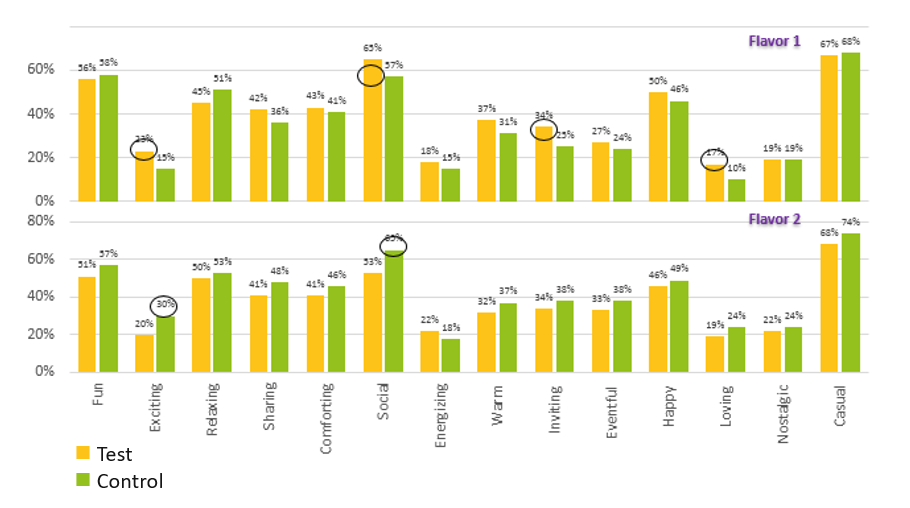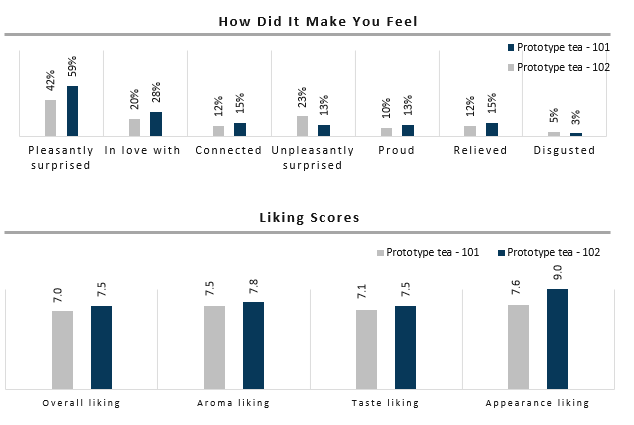
By E2E Research | May 25, 2021
Research Objective
- A food retailer made some changes in their processes for an existing line of ready-to-eat products and wanted to understand the impacts on customer preferences for the redeveloped product.
- A Central-Location-Test followed by a survey was determined to be most appropriate to compare perceptions of the new test products and the original control products.
Scope & Methodology
- Consumers tested the products and rated them against a series of emotional perceptions
- Among others, key statistics conducted included:
-
- Just About Right (JAR) analysis
- Penalty analysis
- Sentiment analysis
- Likeability analysis
-
- For Flavor 1, 47% of people preferred the new test flavor over control. The old flavor won. And, for Flavor 2, 59% of people preferred the new test flavor over control. The new flavor won.

Value Delivered
- The first Control flavor was associated with more positive feelings like exciting, social, inviting, and loving, whereas the second Test flavor was associated with more positive feelings like exciting and social.
- The client learned that the changes in product processes were successful for one flavor but less so for the second flavor.

